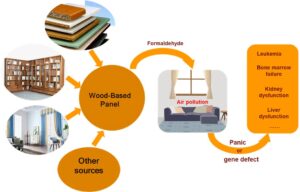Volume 18 Issue 1
Latest articles
- Reviewpp 2408-2425Zuo, Z.-K., Xu, Z., Diao, G.-Y., Li, M., Ma, M.-G., and Shi, Z.-J. (2023). "Flexible functional composites for athlete health monitoring and auxiliary training applications," BioResources 18(1), 2408-2425.AbstractArticlePDF
The flexible functional composites have widely potential applications in the fields of athlete health monitoring and auxiliary training. Recently, there are a few reports on various functional composites such as graphene-based composites, MXene-based composites, and polymer-based composites, etc. However, the applications of flexible functional composites for athlete health monitoring and auxiliary training have not widely reviewed yet. This mini-review article summarizes these three types of functional composites for the applications of athlete health monitoring and auxiliary training. The synthetic methods, structures, and properties of functional composites are reviewed via some typical examples. We pay attention to the properties of composites sensor about health-monitoring. Moreover, the directions are suggested based on our knowledge. It demonstrates that these flexible functional composites will display excellent properties and promising applications potential in athlete health monitoring and auxiliary training.
- Reviewpp 2426-2439Gao, F., Yue, X., Yang, H., Yang, Y., Lam, S., Peng, W., and Chen, X. (2023). "Health damage and repair mechanism related to formaldehyde released from wood-based panels," BioResources 18(1), 2426-2439.AbstractArticlePDF

Wood-based panels, which contain wood raw materials along with urea-formaldehyde (UF) or phenol-formaldehyde (PF) resins, can increase the indoor air concentration of formaldehyde. Formaldehyde can stimulate the upper respiratory mucosa and cross-linking reaction with cell proteins and DNA, and this can result in degeneration and necrosis of respiratory cells and damaged cell proliferation. Formaldehyde can induce health hazards such as nasal cancer, leukemia, and destruction of the reproductive system. Acetaldehyde dehydrogenase 5 (ADH5) in the body cooperates with Fanconi anaemia complementation group D2 (FANCD2) to quickly metabolize formaldehyde into formate and maintain the balance of endogenous formaldehyde. However, when both ADH5 and FANCD2 proteins have defects or mutations, damaged DNA repair failure and cell proliferation induce a variety of health diseases. The damage has been found in the upper respiratory area, not on distal body tissues such as liver, kidney, and bone marrow. Meanwhile epidemiological survey has not shown a positive correlation between formaldehyde and health hazards. It is recommended that the use of wood formaldehyde-based products should be reduced, and pathogenesis genes and damage repair mechanism should be studied systematically and deeply to develop gene drugs to remove excess formaldehyde and activate the damage gene repair mechanism in the future.
- Reviewpp 2440-2519Owens, L. P., and Hubbe, M. A. (2023). "Performance factors for filtration of air using cellulosic fiber-based media: A review," BioResources 18(1), 2440-2519.AbstractArticlePDF
The filtration of air has attracted increasing attention during recent waves of viral infection. This review considers published literature regarding the usage of cellulose-based materials in air filtration devices, including face masks. Theoretical aspects are reviewed, leading to models that can be used to predict the relationship between structural features of air filter media and the collection efficiency for different particle size classes of airborne particulates. Collection of particles can be understood in terms of an interception mechanism, which is especially important for particles smaller than about 300 nm, and a set of deterministic mechanisms, which become important for larger particles. The effective usage of cellulosic material in air filtration requires the application of technologies including pulp refining and chemical treatments with such additives as wet-strength agents and hydrophobic sizing agents. By utilization of high levels of refining, in combination with freeze drying and related approaches, there are opportunities to achieve high levels of interception of fine particles. A bulky layer incorporating nanofibrillated cellulose can be used in combination with a coarser ply to achieve needed strength in a filter medium. Results of recent research show a wide range of development opportunities for diverse air filter devices containing cellulose.
